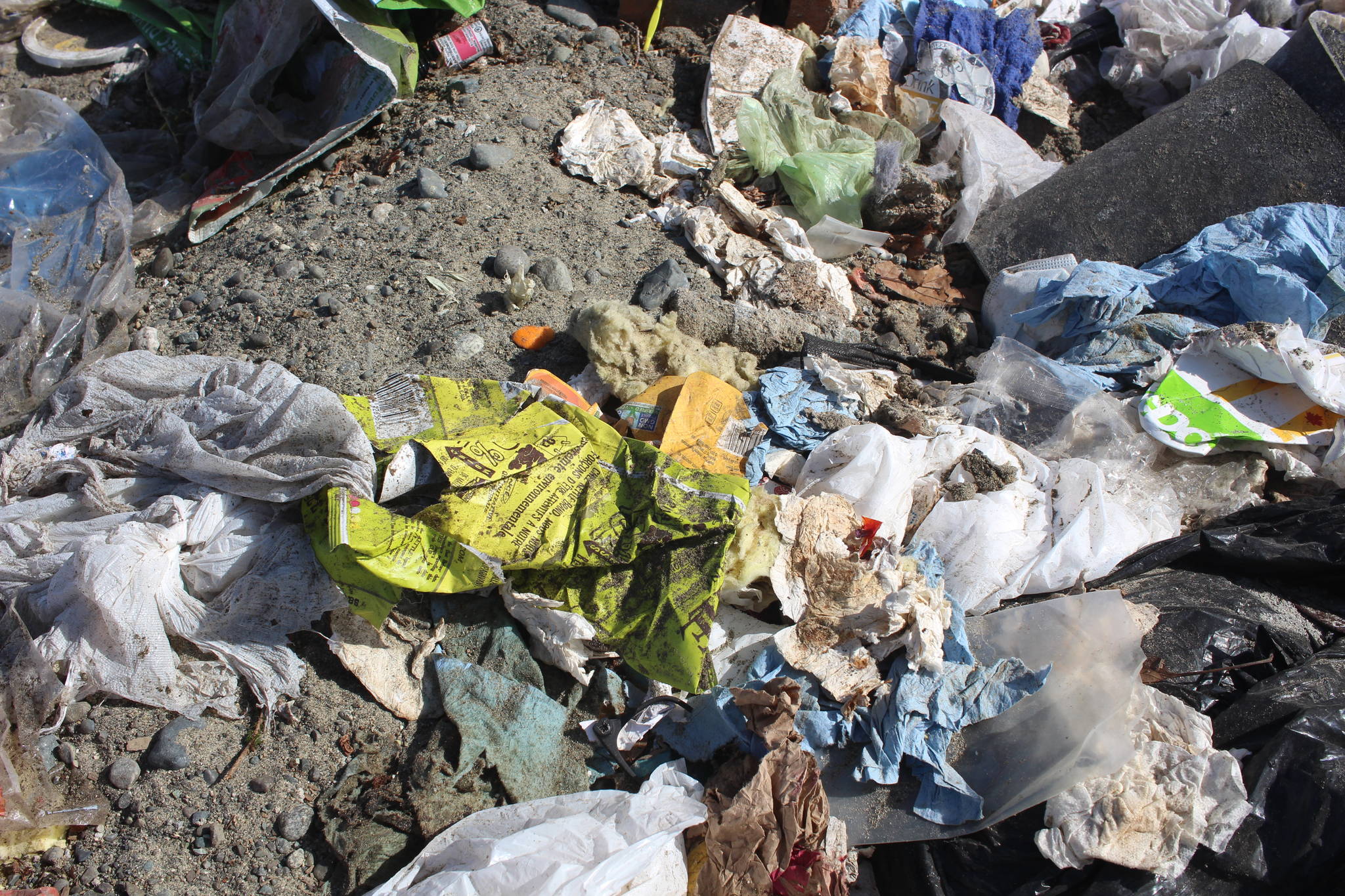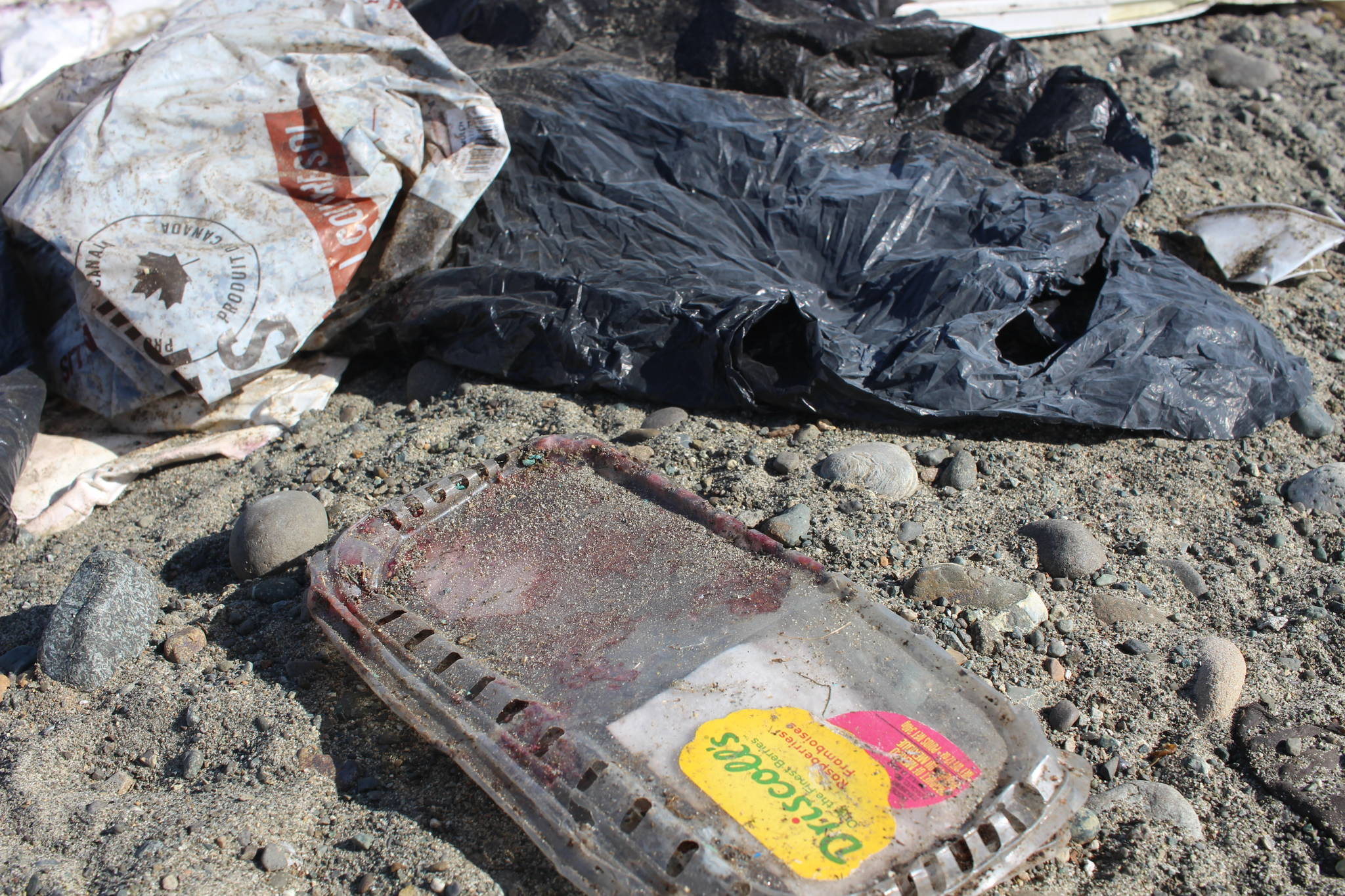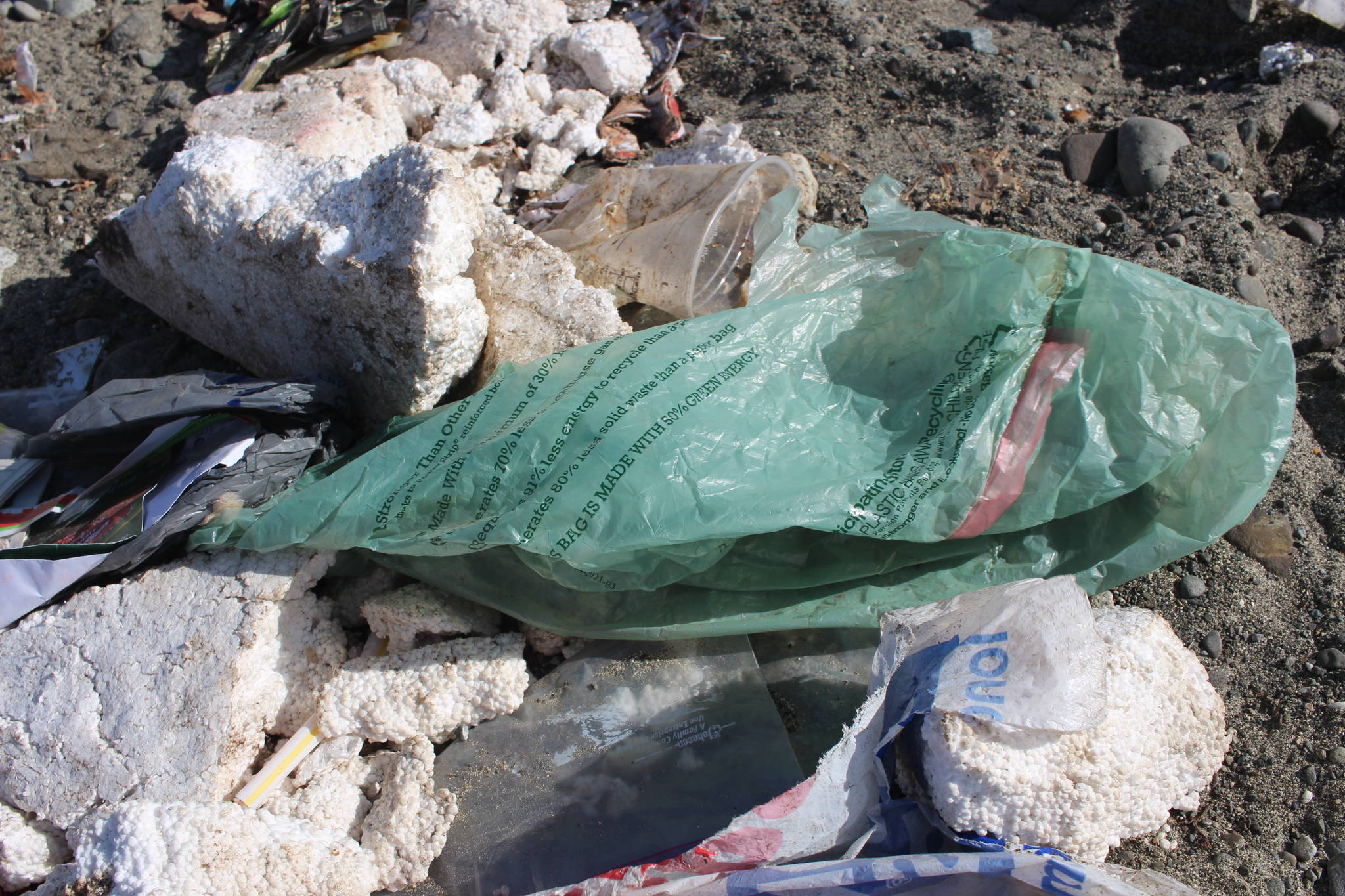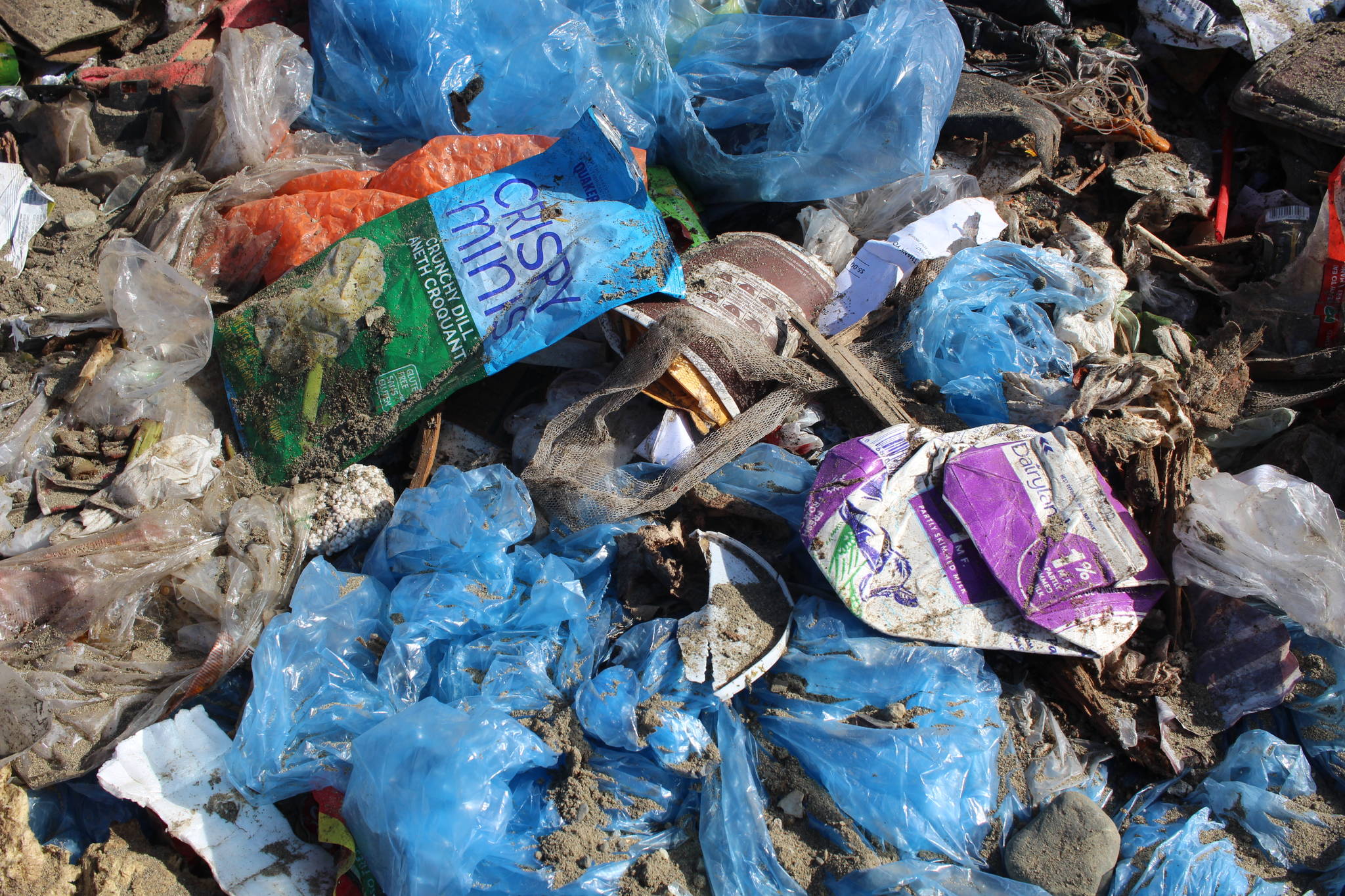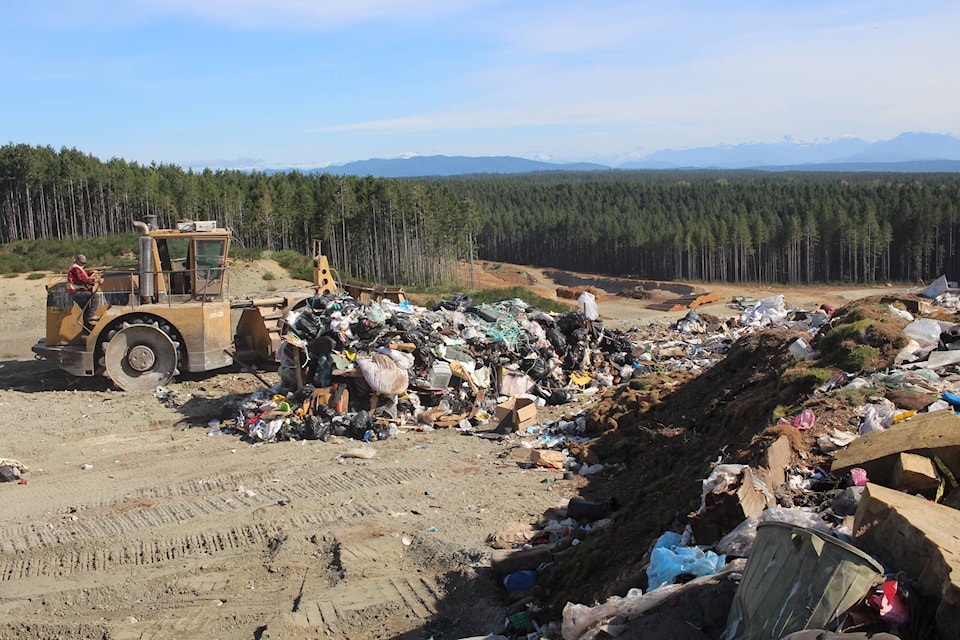This is the second in a series on food waste and its environmental, social and economic impacts.
At the top, the view stretches out across the ocean to the mainland mountains, to the south are Mt. Washington and Constitution Hill punctuating the landscape, north is Mt. Menzies with just a bit of snow left on the peak. However, things in the foreground are decidedly less picturesque.
The bulldozer with its heavy metal-lugged wheels churns through the newly dumped pile of garbage. It is compressing the last of nearly 60 years worth of trash, piled up high past the treeline over what was once a gravel pit to create the breathtaking view. Bald eagles sit in a tight pack on top of the pile, unfazed by the man sitting in the truck nearby whose job it is to chase away birds. The eagles use their keen hunting eyes to spot bits of food amongst the garbage. The food that does not get nabbed by the birds gets covered up and compressed by the heavy bulldozer, left to decompose slowly in an oxygen-free environment, releasing methane, a powerful greenhouse gas, as it rots.
That methane is anywhere from 20 to 80 times as powerful a greenhouse gas as carbon dioxide, and more food waste is added to the landfill every day.
RELATED: Keeping food out of the landfill just might save the planet
“We’re always compacting and trying to save space. When that degrades anaerobically it produces methane. At our landfill in Comox Valley we extract the landfill gas, which is about 50 per cent methane, and we flare it at our site,” Makinson said. “There’s inefficiencies in the system just because it’s open to air. We get a collection efficiency based on what we run through our facility to what we could be getting produced by our tonnages. It’s about 60 to 70 per cent.”
About 30 per cent of all the garbage that ends up here at the Campbell River landfill is organics, which means anything from yard waste to food. Basically, if it can rot, it’s organic. That’s roughly 19,000 tonnes, according to Comox Strathcona Waste Management capital projects manager Cole Makinson. CSWM knows these numbers because in 2017 it did a waste composition study to get an idea of just what people in the area were throwing away. The goal was to see what was going into the landfill, and do a comparison study in a few years after a new composting facility gets up and running.
“I think it’ll have a fair impact,” Makinson said. “I don’t have an exact tonnage number, but we’re sizing the facility for 14,500 tonnes. That’s a future estimate based on all of the households diverting their organics, and we’re leaving space for trying to separate some commercial clients like schools and that. Then we also have preliminary designs for an expansion at the same facility so that we can double our capacity at that facility once the demand is there and once we can get the programs in place.”
As the garbage in the landfill approaches the capacity (expected later this year), Makinson and his team have had to look for ways to increase the lifespan of future facilities. Especially during the COVID-19 pandemic, operators have seen an increase in the amount of garbage coming to the landfill. Any opportunity to divert some of that is a bonus, saving CWSM on costs and prolonging the life of the existing landfill. That is where the composting facility comes in. If that 30 per cent of the garbage can be put somewhere else and turned into something useful, why not pursue it?
“By removing the organics from the waste stream, and composting them aerobically — we’ve got blowers laid into the floor under the compost pile, so it never goes anaerobic, that methane is not produced,” Makinson explained. “It’s a great initiative that we’re looking to create a regional strategy for organics management, saving landfill space and capital costs on creation of landfills. When organics go in the landfill, there’s a host of other costs that go with it. As well as taking up landfill space — rather than being diverted and made into a useful product.”
That useful product? Soil! The composted food waste gets turned into healthy soil that is in quite high demand. Another byproduct of the accelerated food industry is the depletion of healthy soils. Other composting facilities, including some on-Island, have shown that there is a market for healthy compost to both farmers and home gardeners.
“We had a pilot project with just Comox and Cumberland with the Comox Valley landfill. We only did 2,500 tons per year,” Makinson said. “It was really successful and there’s huge demand. It’ll be available for residents and agricultural industry.”
Food is only part of the waste that can be diverted from the landfill. That same waste composition study found that around 50 per cent of the waste is recyclable at local recycling facilities (that includes food, so the remainder would be 20 per cent). Considering how much of that waste comes from food packaging as well shows the scope of the problem. For example, paper and paper packaging are about nine per cent of the total, and plastic is four per cent.
The composting facility will start with curb-side pickup for single-family dwellings in the four communities it serves and expand from there. While they have not nailed down the accepted materials list, Makinson said that they would not be accepting compostable plastics like bag-liners or coffee cups because the decomposition rate on those products is too long. The goal is to eventually expand it to as many homes and businesses in the area as possible.
“An organics ban would be a final stage,” he said. “There’s a number of steps before you put a ban in place. It could happen in the future, but not (immediately). It’s a lot easier to promote the education. You get a lot more buy-in that way, and eventual bans can happen.”
However, a composting facility should not be a license to continue on as we have been. Makinson said the composting facility should be the last piece of the puzzle, with more meaningful action being done well before. The October 2018 United Nations Sustainable Development Goal on waste includes an expansion to the well-known ‘three r’s of recycling,’ to be Rethink, Refuse, Repair, Reduce, Reuse, Recycle.
“We’re kind of the last stop. There are so many pieces before it,” Makinson agreed. “The composting and diverting it from the landfill is that last stage, but it’s definitely that reduction that is a primary objective for food waste. Buy what you need.”
Next week, the Mirror will look into different ways to reduce food waste, as well as how reducing food waste can reduce the strain on your wallet.
